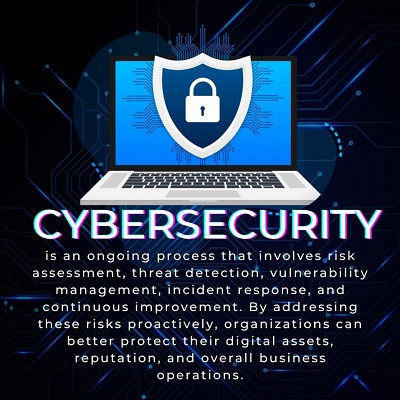In today’s digitally interconnected world, where organizations heavily rely on technology for operations, cyber threats have become more sophisticated and prevalent than ever before. As businesses increasingly shift towards digital platforms, cyber security management becomes a critical aspect of overall risk management. This article delves into the importance of cyber security management, its key components, and how organizations can effectively safeguard their digital assets.
The Signifcance of Cyber Security Management
Cyber security management is the practice of protecting an organization’s information, systems, and networks from cyber threats, unauthorized access, data breaches, and other malicious activities. It involves the deployment of strategies, technologies, and processes to ensure a resilient defense against cyber-attacks.
Key Objectives of Cyber Security Management:
 1. Confdentiality: Ensuring that sensitive information is only accessible by authorized individuals and entities.
1. Confdentiality: Ensuring that sensitive information is only accessible by authorized individuals and entities.
2. Integrity: Maintaining the accuracy and consistency of data and systems by protecting against unauthorized modifcations.
3. Availability: Guaranteeing that systems and data are accessible and usable when needed and preventing disruptions due to cyber-attacks.
4. Authentication and Authorization: Implementing measures to ensure that only authorized users can access specifc resources and perform certain actions.
Components of Cyber Security Management
Effective cyber security management involves a multifaceted approach, integrating
various components to form a comprehensive defense against cyber threats.
1. Risk Assessment and Management
Understanding the specifc risks an organization faces is the frst step in effective cyber security management. Risk assessments help identify vulnerabilities, potential threats, and possible impacts on the organization. Once identifed, risk management strategies are developed to mitigate, transfer, or accept these risks appropriately.
2. Security Policies and Procedures
Establishing clear and comprehensive security policies and procedures is crucial. These documents outline guidelines for employees and stakeholders to follow, promoting responsible behavior and minimizing potential security risks.
3. Network Security
Network security focuses on securing the organization’s network infrastructure, including frewalls, intrusion detection systems, and secure access controls. It aims to protect data as it’s transmitted across networks, preventing unauthorized access and data breaches.
4. Endpoint Security
Endpoint security involves securing individual devices (such as computers, mobile devices, and servers) that connect to the organization’s network. This is achieved through measures like antivirus software, encryption, and device access controls.
5. Incident Response Plan
Developing a well-defned incident response plan is crucial for mitigating the impact of a cyber-attack. This plan outlines the steps to be taken in the event of a security breach, ensuring a swift and coordinated response to minimize damage and prevent further compromises.
6. Security Awareness and Training
Human error is a signifcant factor in cyber security breaches. Regular training and awareness programs educate employees about potential cyber threats, how to recognize them, and best practices for maintaining a secure digital environment.
Implementing Effective Cyber Security Management
To achieve a robust cyber security posture, organizations should:
– Regularly update and patch software and systems to address known vulnerabilities.
– Conduct penetration testing and vulnerability assessments to identify weaknesses.
– Monitor network and system activities for any unusual or suspicious behavior.
– Use encryption to protect sensitive data both in transit and at rest.
– Collaborate with external cyber security experts and share threat intelligence to stay ahead of evolving threats.
Cyber security management is an essential aspect of organizational success in the digital age. By adopting a proactive approach, investing in robust technologies, and fostering a culture of security awareness, organizations can safeguard their digital assets and maintain a resilient defense against ever-evolving cyber threats.
Stay secure, stay vigilant! Enrol on our CISM course today and claim a discount voucher that gives you £145 Off.
